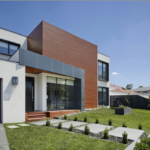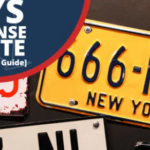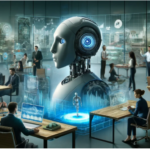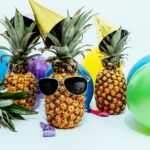Peru-born, New York-based artist Diego Montoya gives us a glimpse into his life as a costume designer, installation, performance, interactive, artist extraordinaire. We found Diego through instagram while searching out #wearableart. His work, while diverse seems to build upon itself, creating a unique and in-depth world.
Where in Florida did you grow up and what are some of the aspects of life in the sunshine state that has inspired and influenced your work since moving to Brooklyn?
I was born in Lima,Peru, and moved to Miami when I was 10. The contrast between the two places was so drastic and made a large impression on me. Miami was this pastel city with images of flamingos and toucans everywhere and that kind of kitsch really intrigued me.
What is your workspace like?
Typically I work on site specific installations so the build happens on location which I find is a better way to really sculpt an environment using the existing architecture. There are some situations where it is a one day installation and I will get a temporary studio to build everything piece by piece, then take it all apart and reassemble it on site in just a few hours. These installs are the craziest because it’s weeks of building, a couple hours to install, and at the end of night we break it all down. It’s a lot of work but I do find something special in these ephemeral pieces. I also have a sewing studio in my apartment in Brooklyn where I build costumes and smaller pieces. That space isn’t huge so my living environment tends to take on the look of whatever project I am currently working on. Right now my place looks like a giant dreadlock of sequined teal and blue.
You describe yourself as a costume designer and a visual artist. Did you go to school for either of these fields?
Yes, I went to school for fashion design and fine art.
You have costumes you designed for a performance called “the Nutcracker”. I’m very intrigued by these photographs. When did this performance take place?
Thank you! The name of the finished piece was Clara’s Nutcracker, Clara being the protagonist in the classic story. This was a collaboration with two friends of mine who created the piece, Katie Rose McLaughlin, a choreographer and Josh William Gelb, a writer/director. It was a retelling of the classic but from the perspective of Clara at age 6, 20, 40, 80 all happening at the same time performed at this former glass factory in Queens. This piece was an abstraction of the original story so I took a more fluid approach to the costumes. I did all four Clara’s in all white which I loved as a contrast to their industrial surroundings. Oh then there are those rat masks. Those were really fun/slightly disturbing, right?
Can we speak about your Gay Superheros? What was the inspiration for you to make this series?
Ha! Well, actually those are all outfits that I made for myself in my early 20s when I first moved to New York. My intention at the time was to take some pressure off myself by creating playful and maybe a little ridiculous aliases. I think I wore spandex onesies exclusively for like four years. It was years later when I was cleaning out my studio that I came across these early spandex pieces and decided to shoot them into a series.
I’m really intrigued to learn more about the performance wearable art piece you have in your costume section. The full body suits that are performing in front of the institute of arts. What was the performance like?
That was a living installation for a gala that took place at the Institute of the Arts in Detroit. There were three women each in a monochromatic jeweled masks and gowns with 20 foot extensions coming out of each arm attached to flowing fabric. The performers were placed in the middle of the fountain and performed a delicate, subtle dance to welcome guests to the event. Trains from their dresses moved with the current of the fountain and it made for a really beautiful and dramatic visual.
Future Ritualistic Green has it’s own category, Exhibitions. It seems to be the bridge between your costumes and installations. I’m assuming visitors were able to interact and put on the wearable art. What was your intention with this exhibition?
Yes, this is the first in a series of interactive installations called Future Rituals. This series explores simple ways that humans connect to one another, going back to basic mediums. Future Ritual 1 explored the idea of playing dress up. Guests enter a monochromatic mint green room with abstract costumes attached to the walls and ceiling. As the guest put things on their body they change the geography of the space, and together create a kinetic sculpture that shifts shapes as people move through the piece creating a surreal memory and hopefully a connection between members of the audience.
You work in such a variety of fields. How did you evolve over time to have your hand in so many jars?
It all happened pretty organically. I moved to New York and worked in fashion for a couple years and also freelanced doing costume design. I eventually got a full-time gig designing window displays which led me to start thinking more conceptually about spacial design and environments. This turned into me doing small art installations for nightlife events here and there. Eventually, I was asked to design huge site-specific installations for the MIX Queer Experimental Film Festival. These installations took place in massive warehouses or abandoned theaters and took weeks to construct. They were open to the public for a week then torn down. I did this for 6 consecutive years and I believe it was in this time that I had the most growth artistically as these projects were largely collaborative. My current work merges costume and environment to make interactive vignettes. Future Rituals are a good example of this.
What are you working on now?
I am working on the next Future ritual. Future Ritual 2 was up this past summer at the Leslie Lohman Museum and was centered around sound. The third installment will be a dinner/installation/performance. I am still developing it so the details are not sorted but I am very excited about it. In addition I want to continue to make interactive work that people can make there own. I see this as an offering to the person experiencing the work. I am also working on a capsule fashion collection that will be out this summer. I haven’t made ready-to-wear fashion in almost a decade so I am excited to see how this turns out.







